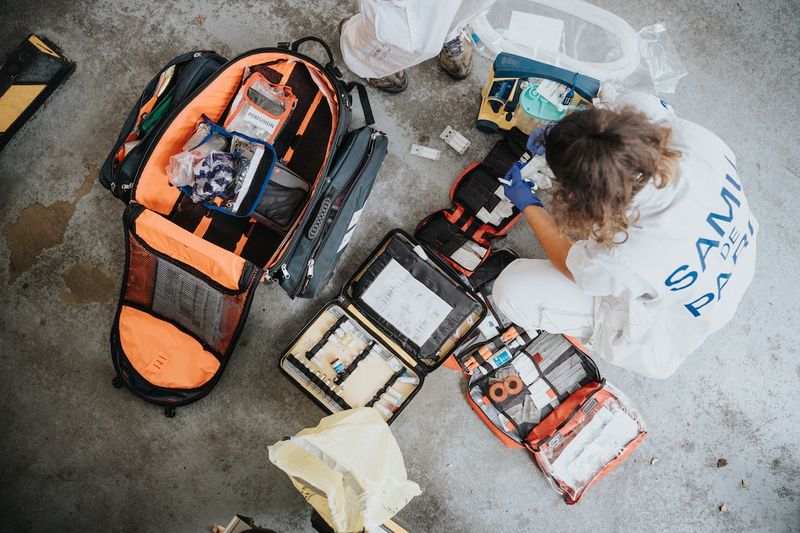Nationwide Emergency Alert Test to Ensure Public Safety
The federal government is set to conduct a nationwide test of the emergency alert system on Wednesday afternoon. This test, conducted by the Federal Emergency Management Agency (FEMA) and the Federal Communications Commission (FCC), aims to ensure that the emergency messaging system is functioning smoothly in the event of actual emergencies. The test messages will be sent to all cellphones, televisions, and radios, accompanied by sound and vibration on phones.
Purpose of the Test: Ensuring Preparedness
The main purpose of this test is to guarantee the readiness of the emergency alert system in the face of natural disasters, terrorism, or any threats to public safety. It is essential to evaluate the effectiveness of the system and its ability to reach the American public in times of crisis. By conducting this test, FEMA and the FCC aim to identify any potential issues, gaps, or improvements needed to ensure that emergency notifications are both timely and effectively received.
Testing Schedule and Message Content
The test is scheduled to begin at approximately 2:20 p.m. ET on Wednesday, Oct. 4. The testing window will run for 30 minutes, with individuals expected to receive the test message just once. However, in the event of an actual emergency occurring on the same day, the test may be postponed, and a backup test is scheduled for the following week.
Cellphone users will receive a test message reading: “THIS IS A TEST of the National Wireless Emergency Alert System. No action is needed.” For Spanish language settings, the message will say: “ESTA ES UNA PRUEBA del Sistema Nacional de Alerta de Emergencia. No se necesita acción.” Television and radio broadcasts will announce: “This is a nationwide test of the Emergency Alert System, issued by the Federal Emergency Management Agency, covering the United States from 14:20 to 14:50 hours ET. This is only a test. No action is required by the public.”
The Importance of Emergency Preparedness
Emergency preparedness and response capabilities are crucial for the safety and well-being of any nation’s citizens. Ensuring that systems and procedures are in place to swiftly communicate critical information during emergencies can help mitigate potential damages and save lives. However, an effective emergency alert system goes beyond technical functionality. It also involves fostering a culture of preparedness, educating the public on emergency response protocols, and promoting community resilience.
The Role of Government and Public-Private Partnerships
Government agencies, such as FEMA and the FCC, play a vital role in establishing and maintaining effective emergency alert systems. These agencies have the responsibility to continuously assess and improve their alert systems, using the latest technology and best practices available. Collaboration with private industry, telecommunications providers, and local government entities is essential to reach a broader segment of the population and provide more precise and timely emergency notifications.
Public Trust and Engagement
Building public trust in the emergency alert system is essential. Citizens must have confidence that when they receive an emergency alert, it is accurate, critical, and relevant to their specific location. Transparency in the testing and maintenance of the system is imperative to alleviate concerns and ensure public confidence. Additionally, educating the public about the purpose and functionality of the system can encourage active participation and preparedness.
Editorial: The Evolving Landscape of Emergency Alerts
The implementation of nationwide emergency alert systems represents an evolving landscape, shaped by advancements in technology and the changing nature of emergencies themselves. As technology continues to progress, emergency alerts can harness the power of geolocation, artificial intelligence, and real-time data to provide more personalized and specific notifications. Integration with social media platforms and mobile applications can further enhance the reach and impact of emergency alerts.
While the current test focuses on the technical readiness of the system, it is crucial to recognize that emergency alerts can also have societal implications. The manner in which alerts are designed, delivered, and received can profoundly affect public perceptions and behaviors during emergencies. Careful consideration must be given to strike the right balance between alert effectiveness and minimizing unnecessary panic or desensitization to alerts.
Advice: What You Can Do to Be Prepared
As individuals, there are proactive steps that can be taken to enhance personal preparedness in the face of potential emergencies. Here are a few recommendations:
1. Stay Informed:
Regularly follow reliable news sources and official government websites to receive accurate and up-to-date information regarding emergency situations in your area.
2. Sign Up for Local Alerts:
Many local governments provide emergency notification services that allow individuals to receive alerts specific to their location. Sign up for these services to ensure you receive timely information about local emergencies.
3. Create an Emergency Plan:
Develop a family emergency plan that includes contact information, meeting points, and evacuation routes. Practice this plan regularly with your loved ones to ensure everyone knows what to do in case of an emergency.
4. Assemble an Emergency Kit:
Prepare an emergency supply kit with essential items such as water, non-perishable food, medication, flashlight, batteries, and a first aid kit. Ensure that your kit is regularly updated and easily accessible.
5. Remain Calm and Follow Instructions:
In times of emergencies, it is crucial to stay calm and follow instructions from local authorities. Panic can hinder rational decision-making and potentially put your safety at risk.
Conclusion
The nationwide emergency alert test is a critical exercise in evaluating the readiness of the emergency messaging system. By conducting regular tests and implementing improvements, FEMA and the FCC can better ensure the safety and well-being of the American public during times of crisis. However, the responsibility of preparedness extends beyond the government, with individuals playing a significant role in safeguarding themselves and their communities. By staying informed, being prepared, and actively participating in emergency response protocols, citizens can contribute to a more resilient society.

<< photo by Mat Napo >>
The image is for illustrative purposes only and does not depict the actual situation.
You might want to read !
- Emerald City Showdown: Streaming Options for Watching Seahawks vs. Saints on Monday Night Football
- “Game Day Showdown: UW Huskies vs Arizona Football – Time, TV Channel, and More!”
- BYU’s Rising Football Program Attracts Coveted OL Ikinasio Tupou
- “Monday Night Magic: Drew Lock Takes Seattle by Storm, Leading to Halftime Triumph!”
- Is Donna Kelce’s PR Stunt with Jake from State Farm a Clever Marketing Move or Just a Hidden Agenda?
- The Rise of Devon Witherspoon: An Instant Lookback at His Game-Changing Pick Six




